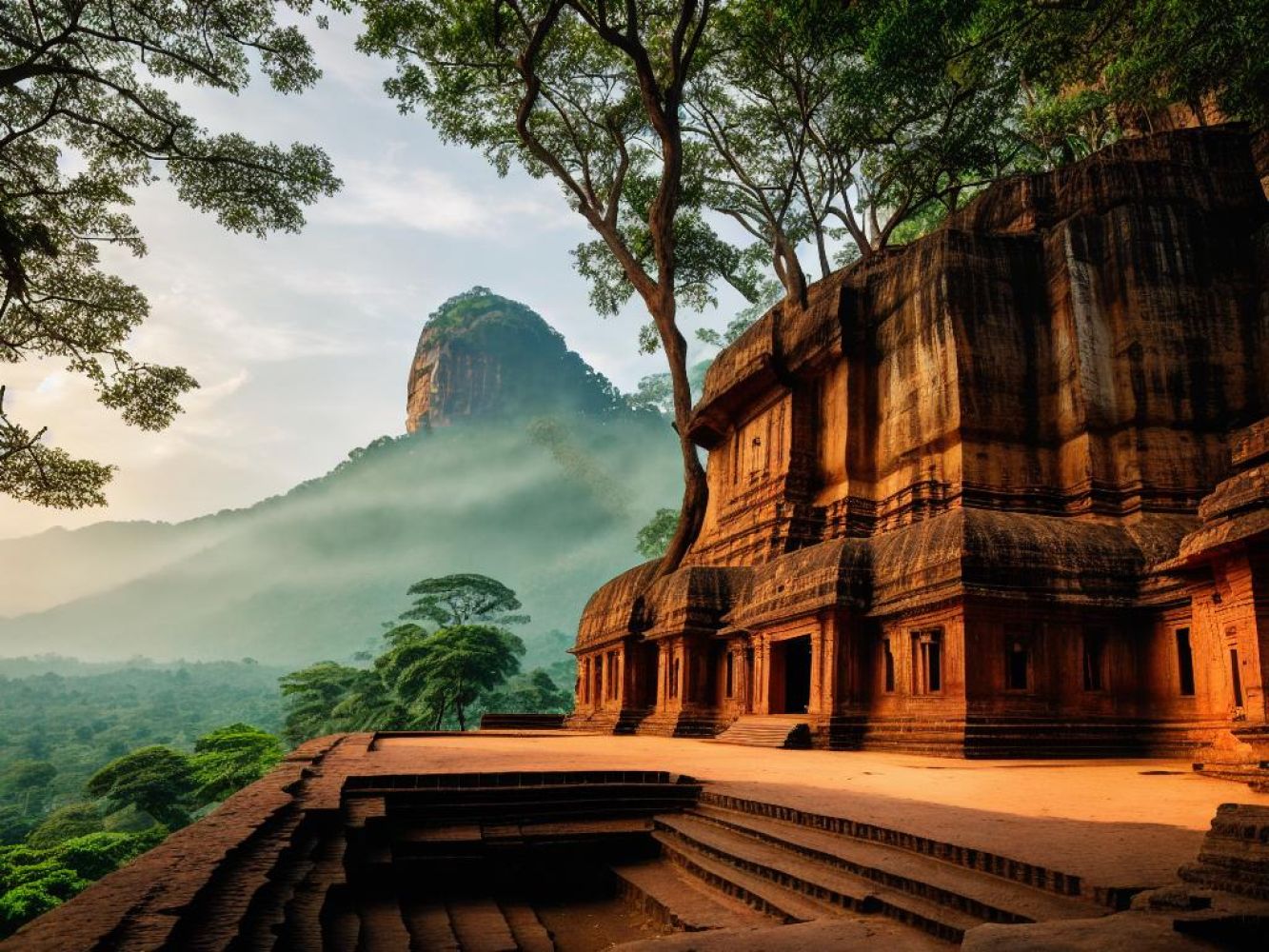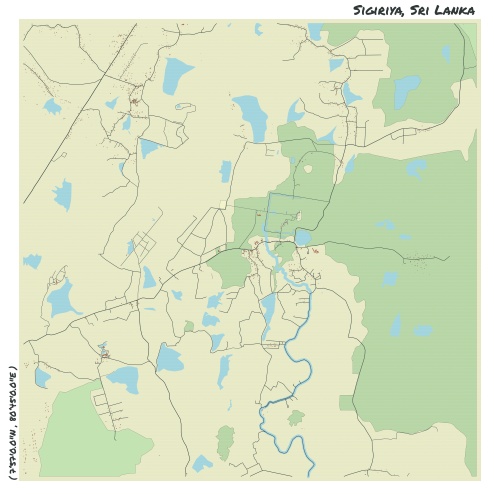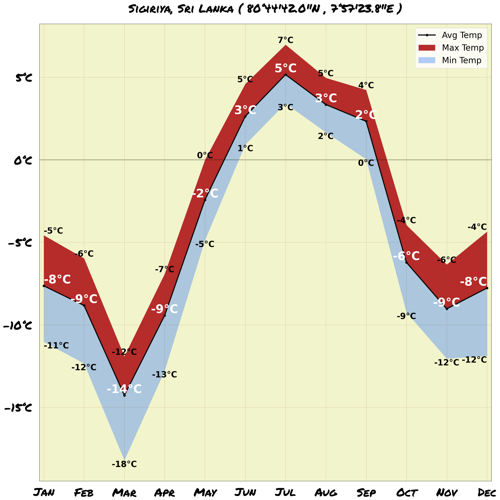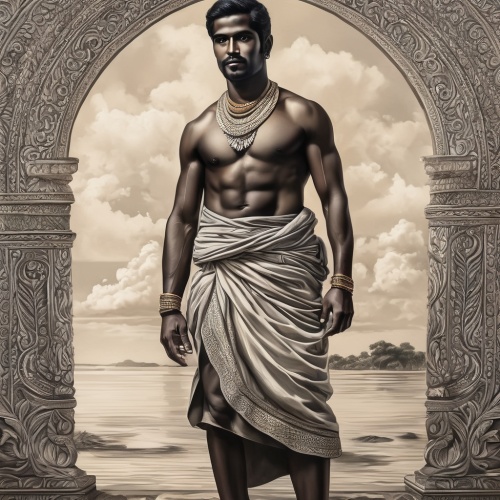Understand
Sigiriya is a remarkable archaeological site in Sri Lanka, renowned for its palace ruins atop a towering 200-meter rock. The remains of extensive gardens, reservoirs, and other structures add to the majestic allure. This rock, a remnant of an ancient volcano, provides a stunning backdrop for the site. Moreover, Sigiriya is famous for its preserved ancient paintings, the Sigiriya Frescoes. These unique artworks bear resemblance to the renowned Ajanta Caves in India, yet possess a distinct and captivating Sri Lankan style. The history of Sigiriya dates back to prehistoric times, believed to have been inhabited by various civilizations. Buddhist devotees established a rock-shelter mountain monastery around the 5th century BC. The complex we see today was primarily built by King Kasyapa during his reign from 477 to 495 CE. Seeking a secure capital, Kasyapa chose Sigiriya as his residence, constructing elaborate palaces, defensive structures, and lush gardens. However, Kasyapa's rule came to an end when he was defeated by Moggallana, who restored the traditional capital of Anuradhapura and transformed Sigiriya back into a Buddhist monastery. While the ruins at Sigiriya are no longer towering structures, they serve as a testament to the city's storied past. Visitors can explore the two-brick-tall foundations of the palace walls, and the preserved frescoes remain a captivating highlight. It's important to note that photography of the frescoes is prohibited. The "mirror wall," once polished to perfection, retains its shine in a few small spots. Despite some modern vandalization, the graffiti scratched onto the wall offers glimpses into the past. Sigiriya, though a result of ancient splendor, continues to fascinate and inspire visitors from around the world.
Get in
Sigiriya, a magnificent rock fortress in Sri Lanka, is conveniently connected to the city of Dambulla by a regular bus service. These buses run every day from 6:30AM to 6:00PM at intervals of 30 minutes, with a fare of LKR45 (Apr 2018). Alternatively, you can hire a tuk-tuk (auto rickshaw) from Dambulla for a cost of LKR400-1000. It's important to keep in mind that Sigiriya is located about 25km from Dambulla, so make sure not to miss the last bus back to Dambulla at around 6:00PM if you're not staying in Sigiriya itself. Dambulla is well-connected with cities like Kandy, Jaffna, and Trincomalee, making it easier for travelers to reach Sigiriya. To explore the majestic Sigiriya rock, there is an entrance fee of LKR6090 (approximately 30USD, payable in either currency). If you're on a budget, you can skip it and head north to another rock temple called Pidurangala, which only costs 500 LKR. From the top of Pidurangala, you'll still be rewarded with breathtaking views of Sigiriya. However, please note that Pidurangala lacks the intricate paintings, stunning gardens, lion paws, and boulder gardens that you will find at Sigiriya. When purchasing tickets for Sigiriya, please remember that the ticket office is cash only and located about a hundred yards before the first ticket check inside the museum. If you prefer a quicker and more convenient option, you can also consider taking an air taxi with Cinnamon Air. They offer daily scheduled flights from Colombo to Sigiriya, which will get you there in just 30 minutes. The one-way fare per person is listed at USD 199 (excluding tax). So, get ready for an unforgettable adventure at Sigiriya!
Map & Climate
Popular Foods
 Hoppers, also known as appam, are a staple breakfast item in Sri Lanka. These thin, pancake-like crepes are made from fermented rice flour batter and coconut milk, giving them a unique texture and flavor. They are typically eaten savory, often accompanied by spicy dahl curry, fish or chicken fillings, and a side of lunu miris - a tangy chili sauce.
Hoppers, also known as appam, are a staple breakfast item in Sri Lanka. These thin, pancake-like crepes are made from fermented rice flour batter and coconut milk, giving them a unique texture and flavor. They are typically eaten savory, often accompanied by spicy dahl curry, fish or chicken fillings, and a side of lunu miris - a tangy chili sauce.  Kottu roti is a popular street food found all over Sri Lanka. It consists of flattened wheat dough, cooked on a griddle until crispy, then cut into strips. The dish is typically prepared by stir-frying the cut roti with spices, vegetables, and your choice of meat (such as chicken, beef, or fish) or made vegetarian. This hearty and filling meal is known for its bold flavors and satisfying textures.
Kottu roti is a popular street food found all over Sri Lanka. It consists of flattened wheat dough, cooked on a griddle until crispy, then cut into strips. The dish is typically prepared by stir-frying the cut roti with spices, vegetables, and your choice of meat (such as chicken, beef, or fish) or made vegetarian. This hearty and filling meal is known for its bold flavors and satisfying textures.  String Hoppers, also known as "hoppers string," are another popular dish in Sri Lankan cuisine. Made from fermented coconut milk and rice flour batter, these noodle-like strands of hoppers are thin and delicate. They are usually served as a snack or light meal, accompanied by various curries, lunu miris, and sometimes with a sprinkling of sugar and grated coconut for a sweet twist.
String Hoppers, also known as "hoppers string," are another popular dish in Sri Lankan cuisine. Made from fermented coconut milk and rice flour batter, these noodle-like strands of hoppers are thin and delicate. They are usually served as a snack or light meal, accompanied by various curries, lunu miris, and sometimes with a sprinkling of sugar and grated coconut for a sweet twist. 




Comments
NO COMMENTS